
Salix lasiolepis is a species of willow native to western North America.

Salix scouleriana is a species of willow native to northwestern North America. Other names occasionally used include fire willow, Nuttall willow, mountain willow, and black willow.

Salix delnortensis is a species of willow known by the common name Del Norte willow.

Diplacus jepsonii, formerly classified as Mimulus nanus var. jepsonii, is a species of monkeyflower known by the common name Jepson's monkeyflower.

Orobanche californica, known by the common name California broomrape, is a species of broomrape. It is a parasitic plant growing attached to the roots of other plants, usually members of the Asteraceae.

Salix bebbiana is a species of willow indigenous to Canada and the northern United States, from Alaska and Yukon south to California and Arizona and northeast to Newfoundland and New England. Common names include beaked willow, long-beaked willow, gray willow, and Bebb's willow. This species is also called red willow by Native Americans according to The Arctic Prairies Appendix E by Ernest Tompson Seton.

Salix laevigata, the red willow or polished willow, is a species of willow native to the southwestern United States and northern Baja California.
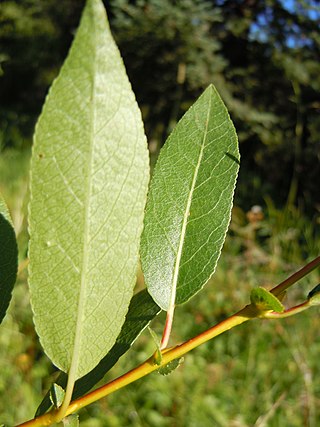
Salix boothii is a species of willow known by the common name Booth's willow.
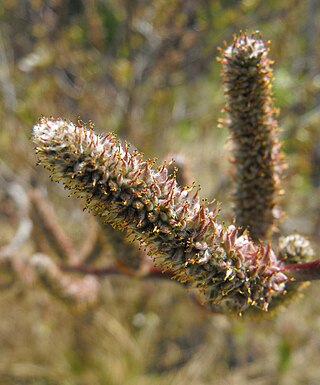
Salix breweri is a species of willow known by the common name Brewer's willow. It is endemic to California, where it can be found in the serpentine soils of the Coast Ranges in and around the San Francisco Bay Area. It is a riparian shrub growing one to four meters in height. The yellowish or reddish brown stems are lightly hairy in texture, the small twigs coated in velvety fibers. The leaves are generally lance-shaped, smooth-edged or gently toothed, and partially rolled under along the edges. The leaves are hairy, with the lower surfaces often quite woolly. Mature leaves may be 14 centimeters long or more. The inflorescence is a catkin which develops before the plant produces leaves. The catkins are up to 5 or 6 centimeters long, the female ones lengthening further as the fruits develop.

Salix drummondiana is a species of willow known by the common name Drummond's willow. It is native to western North America from Yukon and the Northwest Territories in the north to California and New Mexico in the south. It is a resident of moist mountain habitats, including forests, riverbanks, and floodplains.
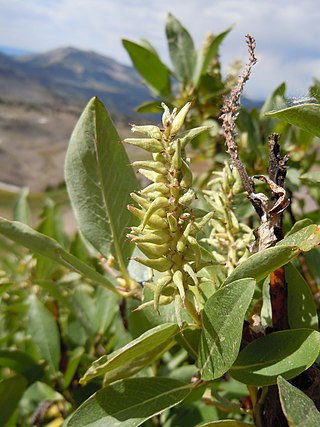
Salix eastwoodiae is a species of willow known by the common names mountain willow, Eastwood's willow, and Sierra willow. It was first described by Bebb in 1879 as Salix californica. This name was later found to be illegitimate, as Lesquereux had given the same name to a fossil willow in 1878.
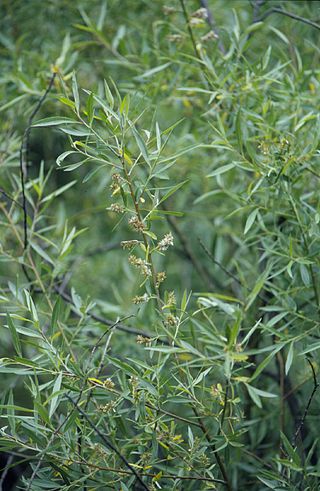
Salix geyeriana is a species of willow known by the common names Geyer's willow, Geyer willow and silver willow. The type specimen was collected by the botanist Karl Andreas Geyer, for whom it was named. Its conspicuous, yellow flowers begin to bloom as early as March, to as late as the end of June.

Salix gooddingii is a species of willow known by the common name Goodding's willow, or Goodding's black willow. It was named for its collector, Leslie Newton Goodding.

Salix lemmonii is a species of willow known by the common name Lemmon's willow, named after J.G. Lemmon. It is native to western North America from British Columbia to California to Colorado, where it grows in moist and wet areas in mountain coniferous forest habitat, such as streambanks and meadows.
Salix ligulifolia is a species of willow known by the common name strapleaf willow. It is native to the western United States. It grows in moist and wet habitat, such as riverbanks, swamps, and floodplains, such as in the Sierra Nevada in California.

Salix melanopsis is a plant species known by the common name dusky willow. It is native to western North America from British Columbia and Alberta to California and Colorado, where it grows in many types of moist and wet habitat, such as riverbanks and subalpine mountain meadows, on rocky and silty substrates.
Salix orestera is a species of willow known by the common name Sierra willow, or gray-leafed Sierra willow. It is native to the Sierra Nevada of California and western Nevada, where it grows in moist areas in high mountain subalpine and alpine climates. It can also be found in Oregon.
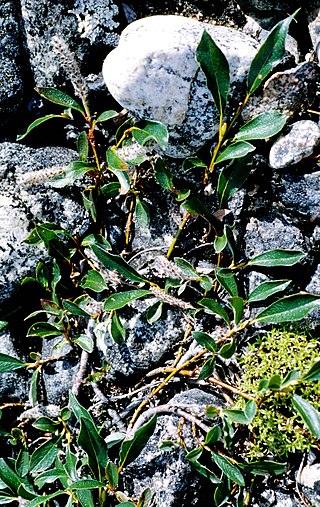
Salix planifolia is a species of willow known by the common names planeleaf willow, diamondleaf willow, and tea-leafed willow. It is native to northern and western North America, including most of Canada and the western United States. It grows in many types of arctic and alpine habitats in the north, and mountainous areas in the southern part of its range.
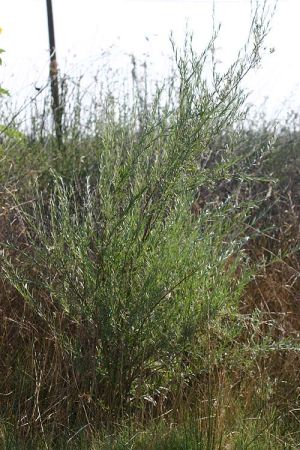
Salix sessilifolia is a species of willow known by the common name northwest sandbar willow. It is native to the west coast of North America from British Columbia and the US states of Washington and Oregon. It grows on sandy and gravelly riverbanks, floodplains, and sandbars.

Salix sitchensis is a species of willow known by the common name Sitka willow.


















